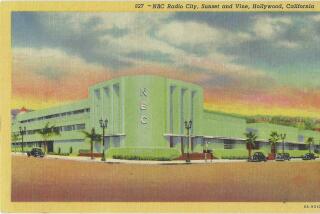Format Changes in the Air at Groove 103, KEZY?
- Share via
Is another big change coming on the Southland airwaves? Speculation and rumors have flown freely in recent weeks that there could soon be a return to the dial of the adult alternative format missing here since the switch of KSCA-FM (101.9) to Spanish-language music last year, or of the hard-rock sounds of the old KNAC-FM, gone since the demise of that station in 1995--or maybe both.
The scenarios tossed around center on Jacor, the Covington, Ky.-based media corporation that owns L.A.’s Top 40 leader KIIS-FM (102.7) and sports outlet KXTA-AM (1150). Jacor has reportedly made offers to either purchase outright or enter a license management agreement to operate the twin signals KACD/KBCD-FM (103.1), currently broadcasting dance beats as Groove 103. And the company is also said to be negotiating a deal for Orange County station KEZY-FM (95.9).
As would be expected, Jacor spokeswoman Pam Taylor offered no comment on the rumors. And Ken Roberts, owner of the Groove frequency, says only that “over the past six months, just about every major broadcasting group has come with proposals, but as of this minute there’s nothing definitive been done.”
Still, it’s accepted as fact in the L.A. radio community that Roberts would like to sell the station--if he can get his price. The problem, many feel, is that his price, said to be as high as $60 million, is scaring off suitors.
In any case, Groove has had little impact in Arbitron ratings since going on the air with an electronica emphasis in 1996 and then modifying its format to a more mainstream dance sound last year, pulling only a .6 share of the market in the most recent quarterly numbers. In contrast, KSCA’s old format drew around a 2 rating, and many feel that with the KACD/KBCD signal, which is strongest on the Westside, and better promotion than KSCA had, the adult alternative format could fare well.
Meanwhile, KEZY could be ripe for hard rock, with a signal that stretches from parts of L.A. County into the Inland Empire, a stronghold for that music. One possibility would be to take the service now being transmitted via the Internet under the KNAC brand name, though some observers believe that should Jacor opt for rock, it would be more likely to bring in someone from one of its other rock stations around the nation.
Cyber Toga: Regardless of its situation with a broadcast outlet in L.A., KNAC is soon to get a huge boost in its coverage. The Internet operation has been contracted by a new college-targeted cyber-entity, Animalhouse.com, to provide its audio programming. Beginning Sept. 15, the site will carry three “stations”--the metal-edged KNAC that’s already available on its own, a new alternative-rock stream called RAH (Radio Animal House) and a third that will draw from the best of real college stations around the country.
Jay Samit, president of Animalhouse.com, sees this facet of his enterprise as harking back in spirit to the 1978 film that gave the venture its name, but utilizes new communications technologies to take it to higher levels.
“This is like FM when I was a kid,” he says. “You can go in and talk to the deejays [via e-mail] and really be an active part of the station.”
But it’s entirely unlike radio from the past in that it’s not so much an entity unto itself as it is the audio component in a “lifestyle” package that includes chat room, news, entertainment features, games, e-mail and the other facets of cyber-life. That, though, Samit says, is the life of today on most college campuses.
“You have 18- to 25-year-olds no longer watching TV or listening to the radio like they used to,” he says. “They’re living on the Internet--93% are hooked up, 43% are on daily, 25% are connected with [high-speed] T1 hookups. All the dorms are wired that way now. And no one has aggregated the services they’re looking for.”
On the music end, he says, that audience does not want things filtered by the various commercial and governmental concerns that mediate the broadcast world. And that, again, brings this back to radio of the past.
“When you look at what Howard Stern had to endure with the FCC, it’s ridiculous,” he says. “We have bigger things to worry about in society. So here’s a place you can say what you feel and play songs that won’t get on conventional radio or MTV. A lot of artists have to cut second versions of songs that are acceptable for radio. We’ll play them as they were meant to be heard. And when was the last time you could turn on the radio and you didn’t know the words to the song? We want people to hear new things that they won’t hear elsewhere.”
Curiously, it’s not “Animal House,” whose owner, Universal Pictures, is one of the corporate backers of this venture, that Samit chooses as a cinematic example of the service’s radio spirit, but another ‘70s classic that harks back to an even earlier time.
“Go rent ‘American Graffiti,’ ” he says. “This is what Wolfman Jack was there, where you feel a connection to the deejay and the music and to other people listening.”
The Jokeman Cometh: Howard Stern sidekick Jackie “The Jokeman” Martling will make an in-store appearance at the Wherehouse at the Beverly Connection in West Hollywood on Sept. 11. He’ll be signing copies of his new CD, “Hot Dogs & Donuts,” and playing Stump the Jokeman, in which fans feed him straight lines and win prizes if he can’t provide the punch.
*
* SHUFFLE AT KFI: Tammy Bruce will not return to the air at KFI-AM. Page 51.
More to Read
Sign up for Essential California
The most important California stories and recommendations in your inbox every morning.
You may occasionally receive promotional content from the Los Angeles Times.










